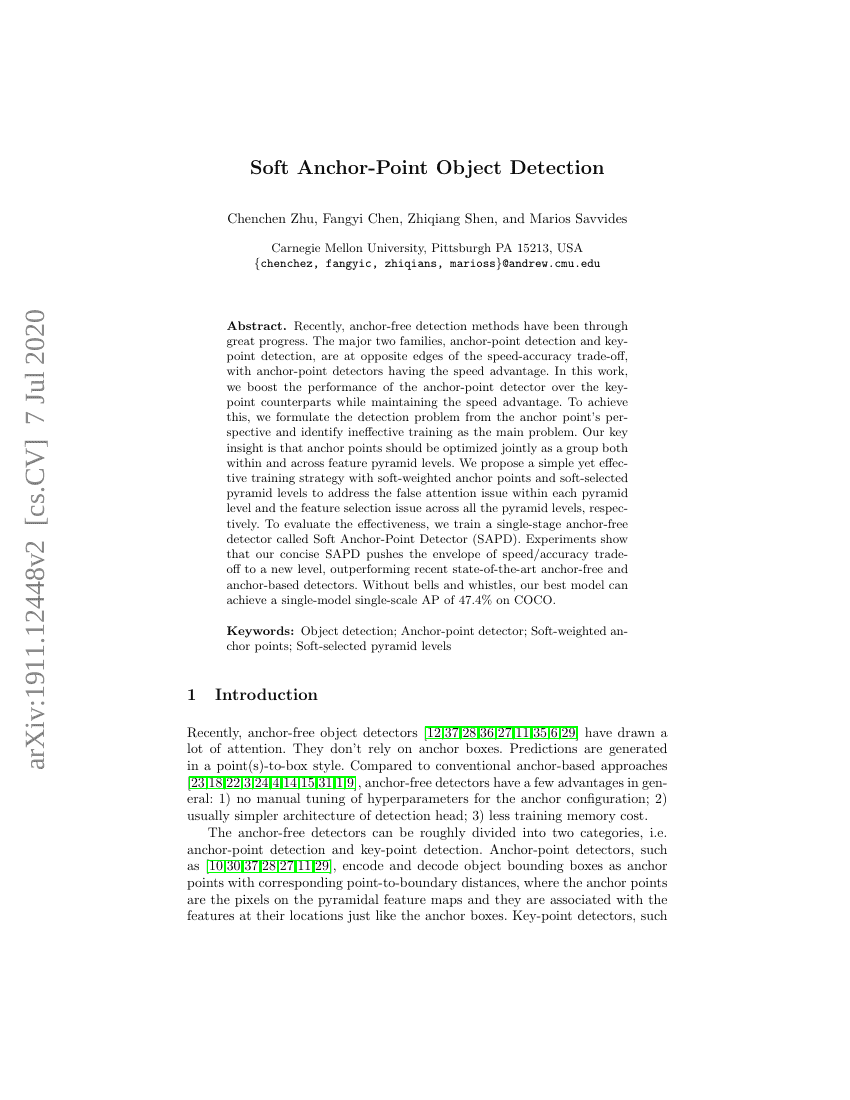Command Palette
Search for a command to run...
Zhu Chenchen ; Chen Fangyi ; Shen Zhiqiang ; Savvides Marios

Abstract
Recently, anchor-free detection methods have been through great progress. Themajor two families, anchor-point detection and key-point detection, are atopposite edges of the speed-accuracy trade-off, with anchor-point detectorshaving the speed advantage. In this work, we boost the performance of theanchor-point detector over the key-point counterparts while maintaining thespeed advantage. To achieve this, we formulate the detection problem from theanchor point's perspective and identify ineffective training as the mainproblem. Our key insight is that anchor points should be optimized jointly as agroup both within and across feature pyramid levels. We propose a simple yeteffective training strategy with soft-weighted anchor points and soft-selectedpyramid levels to address the false attention issue within each pyramid leveland the feature selection issue across all the pyramid levels, respectively. Toevaluate the effectiveness, we train a single-stage anchor-free detector calledSoft Anchor-Point Detector (SAPD). Experiments show that our concise SAPDpushes the envelope of speed/accuracy trade-off to a new level, outperformingrecent state-of-the-art anchor-free and anchor-based detectors. Without bellsand whistles, our best model can achieve a single-model single-scale AP of47.4% on COCO.
Code Repositories
Benchmarks
| Benchmark | Methodology | Metrics |
|---|---|---|
| dense-object-detection-on-sku-110k | SAPD | AP: 55.7 |
| object-detection-on-coco | SAPD (ResNeXt-101, single-scale) | AP50: 67.4 AP75: 51.1 APL: 61.5 APM: 50.3 APS: 28.1 Hardware Burden: Operations per network pass: box mAP: 47.4 |
Build AI with AI
From idea to launch — accelerate your AI development with free AI co-coding, out-of-the-box environment and best price of GPUs.